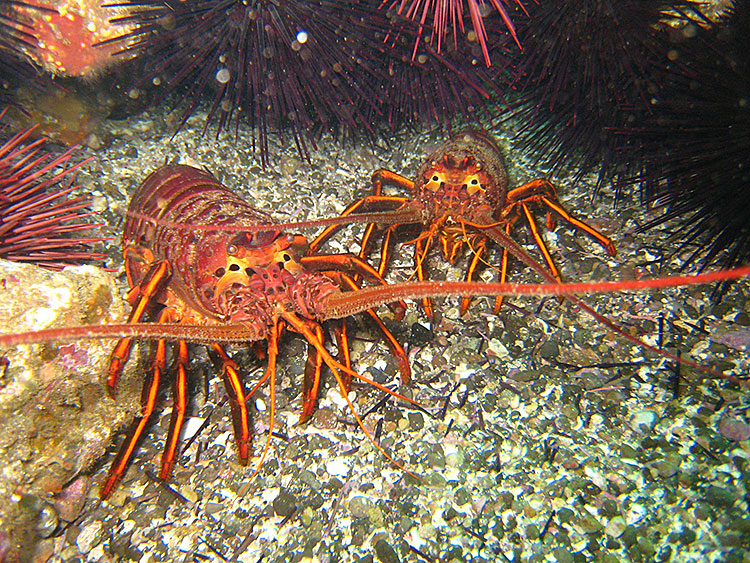
A typical legal-size spiny lobster will average about one pound in weight. Occasionally divers and hoop netters will find lobsters over five pounds (considered trophy size) in California waters. Spiny lobster taken must measure at least 3 1/4 inches in length and are measured in a straight line on the midline of the back from the rear edge of the eye socket to the rear edge of the body shell. The daily bag and possession limit is seven lobsters.
Lobster can be taken with hoop nets and by hand only when skin or SCUBA diving. No appliance (such as fish spears or poles) may be used to assist. CDFW marine biologists suggest using an oily or aromatic bait to dispense a scent trail that nearby lobsters will follow back to the net. Squid, Pacific mackerel, bonito, anchovies or sardines may serve as good bait.
Because lobsters are strong and have hair-trigger responses when they sense predators, the best strategy for divers is usually to grab or pin them to the bottom by their body, rather than grabbing it by a leg or antennae which will likely tear off.
When finished fishing or changing locations, fishers must immediately record the number of lobster taken from that location. Lobster report cards must be returned or submitted online to CDFW at the end of each season by April 30, regardless of whether the card was used or any lobster were caught. Failure to report catch from all cards by the deadline will result in a nonreporting fee that is charged when you purchase a report card next season.
“Each year we only get about 50 percent of lobster report card holders reporting their catch. Our goal is to get as close to 100 percent as possible,” Hofmeister said. “Data from these report cards allow us to determine it catch is increasing or decreasing, the number of lobsters caught per fishing trip, and which gear type is the most efficient. All these pieces of information help managers monitor the population. Everyone benefits from reporting your catch on time. Lobster divers and hoop netters avoid paying the non-return fee, and, more importantly, CDFW scientists can ensure the fishery remains sustainable.”
Lobster fishers should consult the Marine Protected Area maps for the California coastline to ensure they are not fishing in prohibited waters.
The complete spiny lobster regulations are contained in the 2019-2020 Ocean Sport Fishing regulations booklet, found on CDFW’s website and wherever fishing licenses are sold.
A lobster fishing FAQ and other biological information specific to California’s spiny lobster can also be found on the CDFW website. https://www.wildlife.ca.gov/